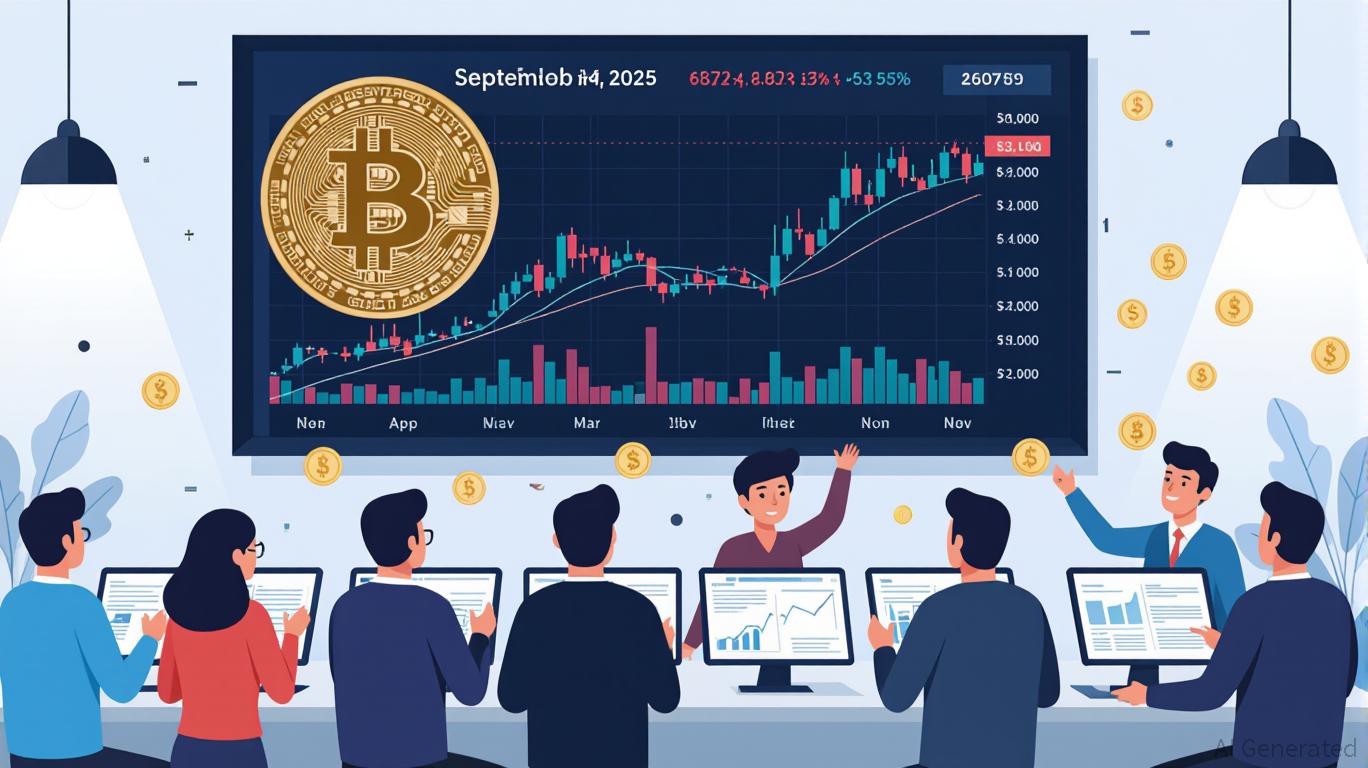Bitcoin’s Sharp Decline: Is This a Healthy Correction or an Ominous Signal?
- Bitcoin fell 10.5% in November 2025 amid a $19B derivatives crash, driven by Fed policy uncertainty and U.S.-China trade tensions. - Regulatory shifts and leveraged liquidations (1.6M traders impacted) exposed vulnerabilities in crypto's derivatives-heavy market structure. - Institutional demand persisted (e.g., JPMorgan's 64% ETF stake increase), suggesting long-term adoption despite short-term volatility. - Derivatives recovery may lag until 2026, hinging on Fed rate clarity and inflation trends, with
The October 2025 Crash: A Sudden Jolt
The "10/10 crash" of October 2025
Macroeconomic Drivers: Fed Moves and Global Strains
The U.S. Federal Reserve’s 25-basis-point rate reduction in September 2025 initially lifted Bitcoin to $114,600. However,

Regulatory Changes and Shifting Market Mood
Regulatory actions added further pressure to the sell-off.
Corporate treasuries were not immune.
Investor Mindset: Anxiety, Doubt, and Derivatives Recovery
The crash revealed how vulnerable leveraged positions remain in a market still maturing.
Nevertheless, institutional interest continues to grow. Ether ETFs drew $9.6 billion in Q3 2025, and JPMorgan boosted its holdings in BlackRock’s iShares Bitcoin Trust by 64%. These developments indicate that, despite ongoing volatility, Bitcoin’s adoption by mainstream investors is gaining momentum.
Looking Ahead: Correction or Red Flag?
For those mindful of risk, the November 2025 downturn presents a complex scenario. On one side, the crash exposed weaknesses in highly leveraged derivatives and corporate holdings. On the other, underlying economic trends—such as the Fed’s eventual shift to looser policy and rising institutional interest—may provide a price floor for Bitcoin.
The crucial issue is timing. If the Fed accelerates rate cuts in 2026, Bitcoin might revisit its October peaks. Conversely, if inflation remains stubborn and geopolitical strains continue, the market could stay range-bound. For now, the 10.5% drop from October’s high seems more like a market correction than a sign of systemic failure—assuming investors steer clear of excessive leverage and focus on long-term strategies.
Summary
Bitcoin’s decline in November 2025 serves as a reminder of the crypto market’s inherent volatility, but it does not spell its end. Ongoing economic uncertainty and regulatory oversight will keep influencing investor attitudes, yet Bitcoin’s function as an inflation hedge and store of value remains. For those with a well-diversified, strategic approach, this correction could be a chance to reevaluate risk and reward in a market that is still evolving.
Disclaimer: The content of this article solely reflects the author's opinion and does not represent the platform in any capacity. This article is not intended to serve as a reference for making investment decisions.
You may also like
Mastercard is Transforming Financial Identity Through Blockchain Privacy Initiatives
- Mastercard partners with Humanity Protocol to launch a ZKP-based financial verification system, enabling users to prove income or loan eligibility without sharing sensitive documents. - The system combines Mastercard's open finance APIs with blockchain-stored cryptographic proofs, allowing portable Human IDs for secure, privacy-preserving credit and DeFi access. - Applications span real-time bank approvals and DeFi risk reduction, with Humanity Protocol's token (H) central to tokenized asset markets afte

Ethereum Updates Today: ARK's Move Toward Ethereum Reflects Growing Institutional Adoption of Crypto Assets for Treasury Management
- ARK Invest sold $31.94M Tesla shares, redirecting capital to BitMine's Ethereum treasury strategy via three ETFs. - BitMine's 2.9% ETH stake and $2.1B unrealized losses highlight crypto treasury risks amid aggressive ETH accumulation. - ARK diversified into crypto exchanges and biotech , signaling institutional confidence in digital assets despite market volatility. - Ethereum's $3,500 price and staking partnerships demonstrate crypto treasuries' potential to bridge traditional/decentralized finance.

Interlink Reduces Losses but Falls Short of Revenue Target as Growth Strategies Develop
- Interlink Electronics reported 11% YoY revenue growth to $3.0M in Q3 2025, driven by Calman's force-sensing products and improved 41.8% gross margin. - Despite $0.24M revenue shortfall, the company narrowed its net loss to $336K through capital structure simplification and $1.55M operating expense management. - Strategic moves include FDA/USDA grants for food safety tech, a UK acquisition LOI, and a 38% price target premium reflecting expansion optimism. - Analysts highlight critical success factors: sus

Bitcoin News Update: Senate Divided Over Crypto Regulation: CFTC Authority or SEC Supervision
- U.S. Congress proposes competing crypto frameworks: Senate Agriculture Committee expands CFTC's digital commodity oversight, while Banking Committee grants SEC control over "ancillary assets" via decentralization thresholds. - CFTC's expanded authority would regulate Bitcoin/Ethereum spot markets, requiring custodial safeguards, while SEC's framework creates conditional pathways for tokens to transition from securities to commodities. - Post-shutdown resumption enables SEC/CFTC to restart ETF reviews, wi